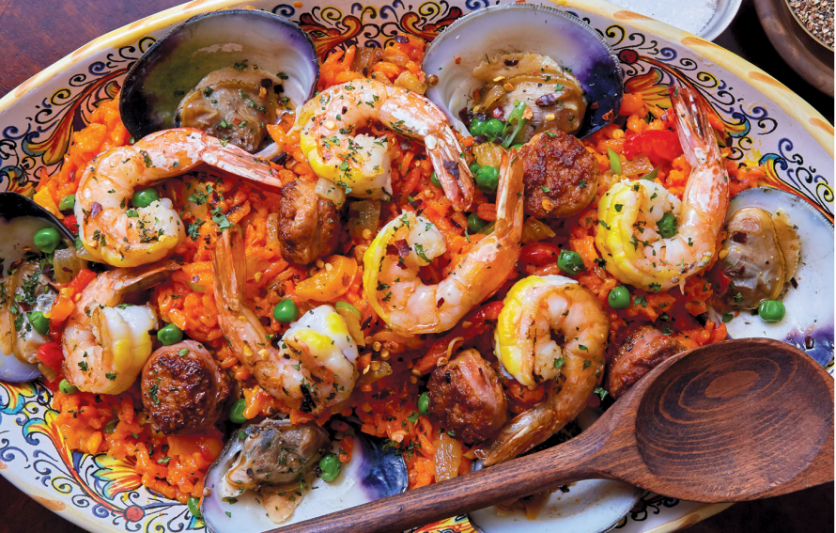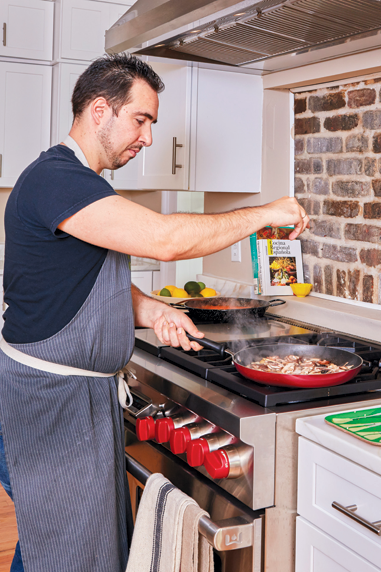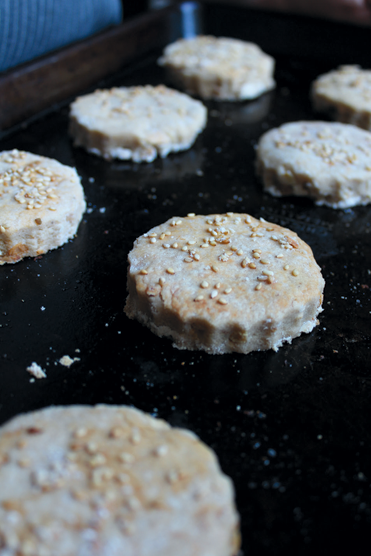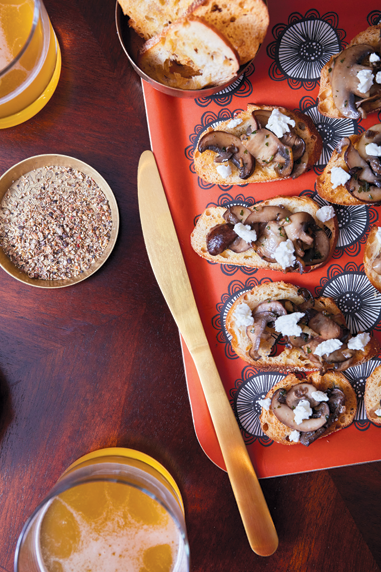Creating Mixed Traditions: Blending Spanish and Southern Culture at the Holiday Table
When I married my husband, Alfonso, we were living in Spain, his home country. There were a few years we were unable to travel to the United States for Christmas, so we added American holiday traditions into our Spanish life to keep me from becoming homesick. Now that we have made Charleston our home, we’re doing the same thing here by incorporating Spanish traditions into the holidays. If there is one thing Spaniards and Southerners have in common, it’s a love for good food, good company and great conversation around the table—so creating mixed traditions in our family would be easy.
When my family visited Spain for the first time, we brought them to our favorite corner restaurant as soon as they arrived; we had about enough time to drop their bags at the hotel before the “Bring me the garlic mushrooms!” chants began. Years later while planning appetizers to serve at our first American Christmas, Alfonso decided to place those garlic mushrooms atop crostini adorned with Spanish goat cheese. Now we always bring the garlic mushroom and goat cheese crostini to my mom’s Christmas Eve shindig because they are so easy and quick to make.
In my husband’s Southern Spanish family, when someone calls for a celebration it is almost always followed by, “OK, so for the paella we need…” Although paella is a Valencian specialty traditionally made with rabbit and chicken, we take advantage of living in the Lowcountry and kick up the seafood a notch in this famous Spanish dish. With a special order pimentón de vera (a slightly sweet and definitely smoked Spanish paprika), saffron and olive oil from Sevilla (our Spanish hometown), and the rest of the ingredients local from the Carolinas, we have made this saffron-infused treat our go-to for the Castejón family Día de los Reyes Magos (Three Kings Day).
El Día de los Reyes Magos is to Spanish children what Christmas morning is to some American children. They go to bed the night before dreaming of gifts to be brought to them by the Three Wise Men (the three kings) while they sleep, and wake up before the crack of dawn the next morning to open presents. So as not to lose this tradition, Alfonso and I have designated this day, January 6th, as the day we exchange gifts with each other and the day of the Christmas paella.
Garlic crostini are a treat for the palate and paella is divine, but before we can officially close out the Christmas season in the Castejón house, there must be at least 117½ mantecados consumed per person. What is a mantecado?
I first heard of mantecados when Alfonso’s cousin sold them for a school fundraiser in Spain. Mantecados are a Spanish Christmas cookie made with pork fat. I learned that pork fat is just a delicious substitute for butter or oil in a regular cookie recipe and it makes sugar and flour so much more delightful. The first year we were back in the United States, I ordered a box online from an American company that imports Spanish products. It was better than not having pork fat cookies but they weren’t what I remembered. So, the family chef, aka Alfonso, got in the kitchen and started working out what would eventually become our very own mantecado recipe.
Introducing Spanish dishes to our American friends and family is something both Alfonso and I are passionate about, but the best part is making those recipes using ingredients and products from our abundant coastal city. My very first experience with Spaniards was eating paella made with seafood that reminded me of fresh Lowcountry bounty you can find here. After all of these years, traditions and dishes have gotten so blended that we really can’t remember the last time we had an “American Christmas” or a “Spanish Christmas.” For us, Christmas traditions have become the best of what both our extended families have shown us and the mixing of these traditions pulls our very spread-out world together under one roof, even if it’s just for a couple (or 50) bites.









